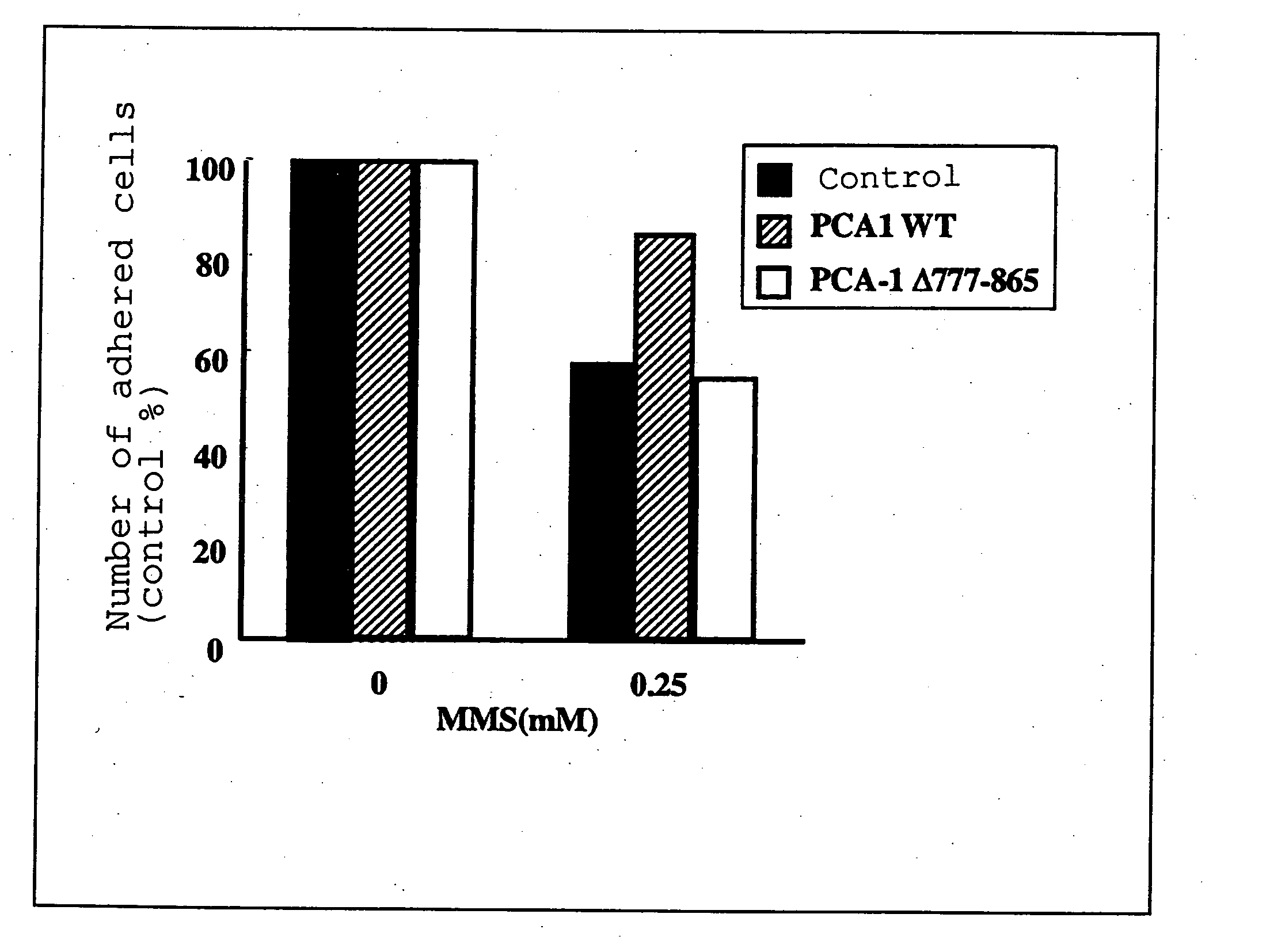Method Of Adjudicating On Prostate Cancer
a prostate cancer and prostate cancer technology, applied in the field of prostate cancer determination, can solve the problems of difficult to distinguish prostate cancer from prostatomegaly (benign prostatic hyperplasia) or prostatitis, and achieve the effect of convenient and highly sensitive determination
- Summary
- Abstract
- Description
- Claims
- Application Information
AI Technical Summary
Benefits of technology
Problems solved by technology
Method used
Image
Examples
example 1
[0120] The postoperative specimens from four prostate cancer patients who had never undergone a chemical therapy or hormone therapy were histopathologically divided into cancerous part and peripheral non-cancerous part to obtain tissue samples. In addition, human prostate cancer cell lines (PC-3, DU145, LN-CaP) were also used.
[0121] The obtained tissues and cells were frozen and subjected to total RNA extraction. Frozen samples were homogenized in a TRIzol reagent (manufactured by Life Technologies, Inc., Rockville, Md., USA), and total RNA was isolated according to the protocol provided by the manufacturer. Potentially contaminating DNA was removed by a treatment with RNase-free DNaseI (manufactured by Wako Pure Chemical Industries, Ltd.). Reverse transcription reaction was carried out using total RNA (5 μg), oligo dT primer and AMV reverse transcriptase (manufactured by Life Technologies, Inc.). PCA-1 gene was amplified by PCR using a part of the obtained cDNA. The composition of...
example 2
[0130] Normal PCA-1 (PCA-1WT) gene, and the PCA-1 deletion mutant (PCA-1A777-865), wherein the 777th-865th bases had been deleted, were incorporated into a mammal expression vector (PEGFP). These expression vectors (5 μg each) were transfected into COS-7 cells (1×106) by the DEAE-Dextran method. In a control group, an empty expression vector was transfected into the cells. At 48 hr of transfection, 0.25 mM methyl methanesulfonate (MMS) was added to induce alkylation damage of the nucleic acid, and at 24 hr thereafter, the number of adhered cells was measured. The results are shown in FIG. 1.
[0131] As is clear from FIG. 1, the death of about 40% of the cells due to the alkylation damage of nucleic acid caused by 0.25 mM MMS was observed in the control group and the PCA-1 66 777-865 transfection group. In contrast, the MMS-induced alkylation damage was remarkably reduced in the PCA-1WT transfection group. From the results, it was shown that normal PCA-1 expressed in vivo dealkylation...
PUM
| Property | Measurement | Unit |
|---|---|---|
| Length | aaaaa | aaaaa |
| Length | aaaaa | aaaaa |
| Length | aaaaa | aaaaa |
Abstract
Description
Claims
Application Information
 Login to View More
Login to View More - R&D Engineer
- R&D Manager
- IP Professional
- Industry Leading Data Capabilities
- Powerful AI technology
- Patent DNA Extraction
Browse by: Latest US Patents, China's latest patents, Technical Efficacy Thesaurus, Application Domain, Technology Topic, Popular Technical Reports.
© 2024 PatSnap. All rights reserved.Legal|Privacy policy|Modern Slavery Act Transparency Statement|Sitemap|About US| Contact US: help@patsnap.com









